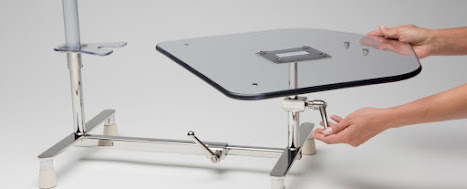A Look into Pediatric Medical Equipment for Child Healthcare
When it comes to healthcare, children have distinct needs. Their smaller size and developing bodies require specialized equipment to ensure accurate diagnosis, comfortable treatment, and optimal healing. This blog delves into the world of pediatric medical equipment, exploring some essential tools used for various procedures and treatments.
Focusing on the Fundamentals:
Weight and Height Measurement: Accurate measurement of weight and height is crucial for monitoring growth and development in children. Pediatric scales are designed to be comfortable and engaging for young patients, often featuring bright colors and playful designs.
Vital Signs Monitoring: Monitoring vital signs like heart rate, blood pressure, and oxygen saturation is necessary for assessing a child's health. Pediatric cuffs and thermometers are designed specifically for smaller bodies, ensuring accurate readings and reducing discomfort.
Examination Tables: Examination tables for children are typically lower and more petite than adult tables, allowing for easier access and reducing anxiety. They can be equipped with features like adjustable height and fun designs to create a more welcoming environment.
Specialized Equipment for Specific Needs:
Nebulizers: These professional medical devices deliver medication in a mist form, making them ideal for treating respiratory problems in young children who may struggle with inhalers.
Otoscopes and Ophthalmoscopes: These specialized tools allow doctors to examine a child's ears and eyes. Pediatric otoscopes and ophthalmoscopes are designed for smaller ear canals and pupils, ensuring a comfortable and thorough examination.
Feeding Tubes: For some children with feeding difficulties, feeding tubes may be necessary. Pediatric feeding tubes come in various sizes and materials that meet the particular needs of each child.
The Spotlight on Spica Tables:
Spica tables are crucial pieces of pediatric medical equipment in orthopedic problems of kids. These specialized tables are used for procedures involving the application of Spica casts, a full-body cast that immobilizes the hips, legs, and sometimes the torso.
A good Spica table offers several advantages:
Safety and Stability: The table helps ensure the child's safety and stability during the lengthy and uncomfortable casting process.
Radiolucency: The table is constructed of materials that allow X-rays to pass through, enabling doctors to view the child's bones and monitor cast placement without moving them.
Adjustable Platform: Spica tables often have adjustable platforms to accommodate different heights and casting positions, ensuring a comfortable experience for the child.
Beyond the Equipment: A Child-Friendly Approach
While advanced pediatric medical equipment plays a vital role in pediatric care, creating a welcoming and positive environment is equally important. Utilizing brightly colored equipment, child-sized furniture, and age-appropriate explanations of procedures can significantly reduce anxiety and promote cooperation in young patients.
By combining specialized equipment with a compassionate and child-friendly approach, healthcare professionals can ensure the best possible experience for their tiny patients.




Comments
Post a Comment